What with the recent article in RECOIL on the H&K MP7 and the resulting internet backlash, I figured I would give you guys a little insight into my experiences with that firearm. A few months ago I had the opportunity to fire an MP7A1 at the NDIA live fire demonstration (Joe Grine pictured above having some fun before I stepped to the line), and I have to admit that I came away with some mixed feelings . . .
Not mixed feelings about civilian ownership — you’re talking to a guy whose blood pressure goes up every time he remembers that the machine gun registry is closed — mixed feelings about the gun itself and its usefulness.
The MP7 was designed to fill a niche in the military and law enforcement market. There’s a grey area, specifically in close quarters operations, where a carbine is simply too big to maneuver and a handgun doesn’t have enough accuracy or speed to properly engage the target. It’s also handy to issue to troops who work in cramped spaces (such as a helicopter or tank) and only really need something that can be used in an emergency that’s slightly better than a handgun.
This is a niche that’s traditionally filled by the SMG or Sub Machine Gun, a small firearm that is designed to be fired from the shoulder and typically uses pistol caliber cartridges. In WWII, that niche was filled by the M1 carbine. But for the modern battlefield, many more options are available.
The standard option these days for the SMG is another design by H&K, specifically their MP5 (video above in the SD variant). Its compact size, easy operation and ammunition compatibility with currently issued firearms (9mm) lets it slip into the arsenals of the world relatively easily and without much new gear having to be ordered or any special ammunition to be acquired.
The MP5 and its variants have been used since the 1960s by everyone from the U.S. Special Forces to guerrilla fighters, and is currently being issued to U.S. troops in combat as well as one of the weapons of choice for SWAT teams across the country. But that’s not to say that the MP5 doesn’t have its downside.
Thanks to being designed in the 1950s and 1960s, the MP5 doesn’t use the latest manufacturing procedures and processes. Best example: the body of the gun is traditionally made by stamping a piece of sheet metal and twisting it into shape. It’s a very simple process which leads to a relatively heavy SMG that can develop problems over time and with repeated use.
The other issue is the ammunition. A 9mm round is great for soft tissue, but for body armor it doesn’t really cut the mustard. Rounds such as the 5.7mm ammo developed by FNH for their P9o and FN Five-seveN was originally developed to be a high velocity/low diameter round that put a TON of force on a small area and penetrated low level body armor better than straight handgun ammunition. H&K, naturally enough, wanted to follow suit.
In 2001, they began producing the H&K MP7. The gun was designed to be their response to the P90, which came out in 1991 (a decade earlier). It was compact, lightweight and had a high rate of fire. It took advantage of newer manufacturing processes making the gun weigh half as much as either the MP5 or the P90. And, most importantly, it looked dead sexy.
Seriously, I would buy one of these in a heartbeat just for how awesome it would look in my collection. If there’s one thing H&K does right every time, its getting their guns to be visually appealing in addition to being functional. That’s why it’s been featured in games like Half Life 2 and series like Battlestar Galactica.
But there’s a problem: the ammunition.
FNH’s P90 had been on the market for a decade when the MP7 came on the scene, and civilian sales of their rifle AND their handgun that take the 5.7 ammunition had created enough demand in the market for the ammunition to be widely available and relatively cheap. Heck, most Walmarts still sell the 5.7 ammo. But what they don’t sell is H&K’s 4.6×30 ammunition.
When we were handed the MP7 and a magazine at NDIA, the H&K rep made sure to tell us to go slow on the ammo. “This is expensive stuff, don’t waste it” he admonished us. And the reason is clear — there’s only one gun that shoots that ammo, and there are no civilian models available. H&K had been working on a UCP handgun that fires the same rounds (like FNH’s offerings), but in 2009 they shelved the project. And while there are caliber conversion kits to allow some other SMGs to take the round, there are no other firearms that are native 4.6×30.
The effect that this has had on the popularity of the gun is substantial. Imagine if you were buying new firearms for a police department or military unit and had to choose between new MP5s or MP7s — which would you choose? The tried and tested design with readily available, cheap ammunition, or the technically superior firearm with ammunition that’s more expensive and hard to find than modern production 7.62 Nagant? It doesn’t make sense from a financial perspective and for that reason it isn’t gaining any popularity.
But the real question is how well the gun shoots and if it’s any fun. And the answer to that is it’s loud and generally uncomfortable. The EXTREMELY short barrel means that most of the powder in the case is wasted as noise. And positioning the muzzle so close to the vertical foregrip means the shooter needs to keep a close eye on where his hand is lest he slip and get singed by the escaping gasses.
Is the gun cool? Hell yes. Sub zero cool, even. But it’s nowhere near practical from a modern LEO/Mil perspective, and the ammunition costs (plus the fact that it’s generally impossible to get) mean it’s not really a good option for civilian shooters either. The MP7 is trying to compete in the same space as the P90 and MP5, but there aren’t enough benefits of the weapons system to make it a better choice than either of them.

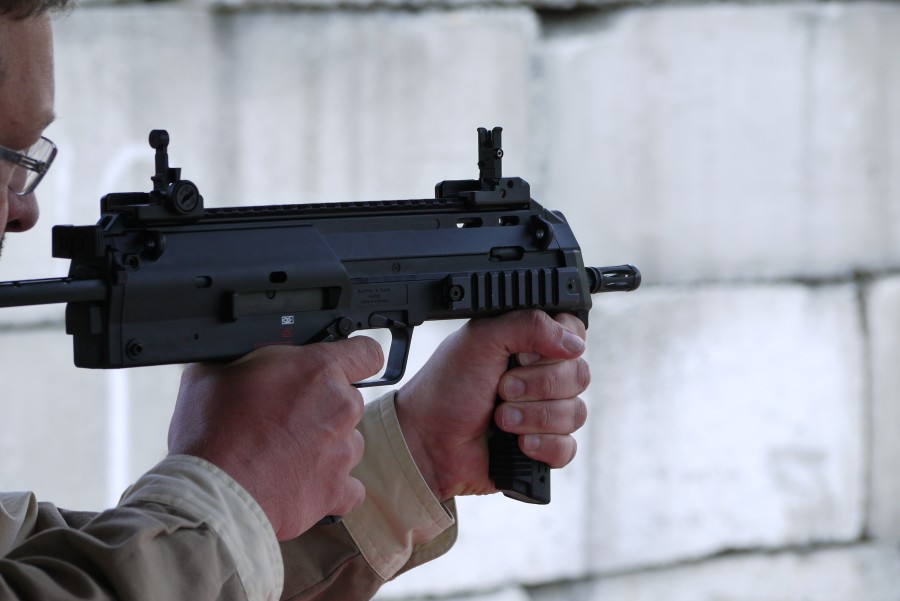
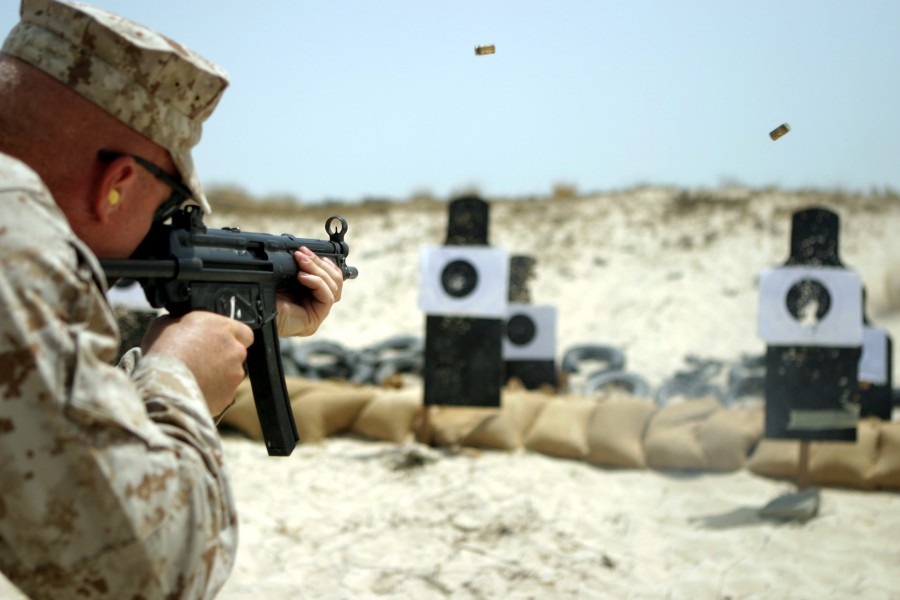
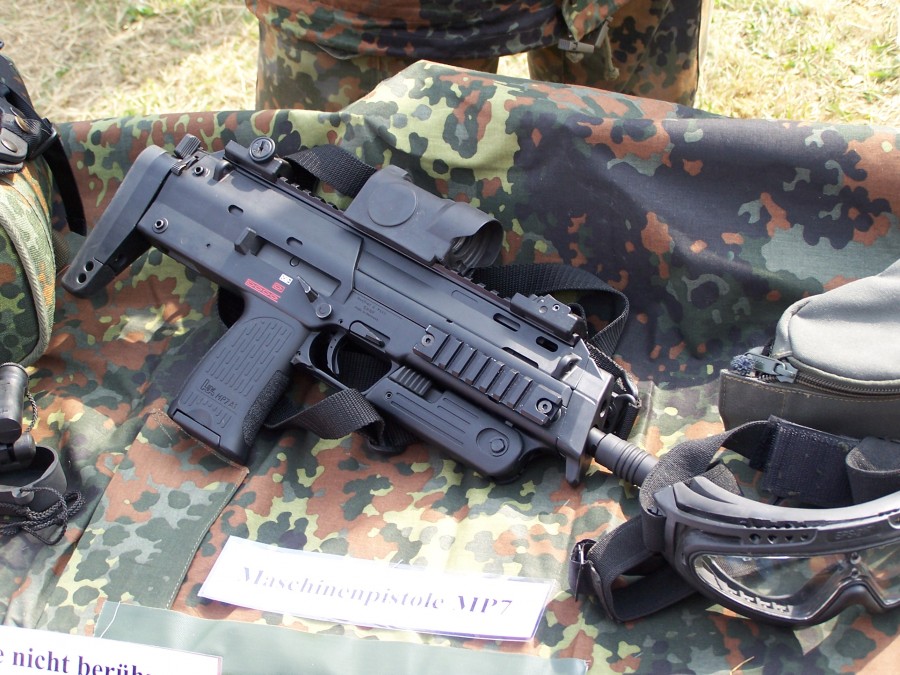
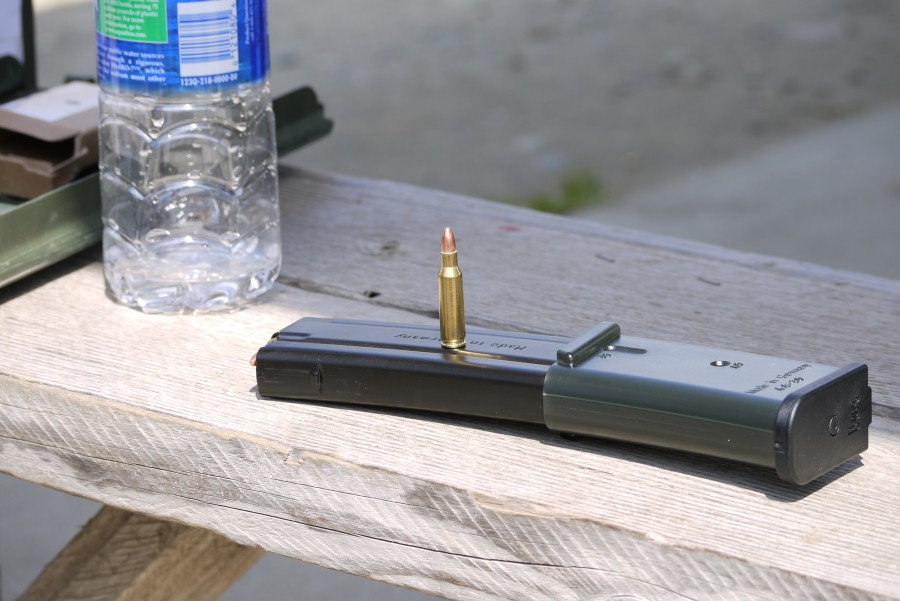


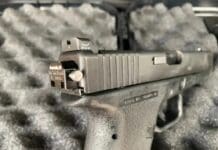
Still, would be nice for tank crews, versus beretta m9s for all and a few m4s.. But that’s a small niche, I would consider something else for support troops.
The P90 is only a little over three inches longer.
And holds 50 rounds without having to worry about the large magazine getting in the way….I was fondling one at a local gun shop the other week. I wish I had a better job so I could’ve taken it home with me.
Scratched from Christmas list. Thanks Nick.
Meh, it’s a gun that only exists as an ego boost for HK and their fanboys (sorry HK fanboys! Have fun with your boat anchor Mk23!). They can’t let FN steal all the spotlight with their fancy hi-tech P90/FiveSeven combo.
I doubt they really even care if they sell any to LE/Mil buyers, much less us poor civilians. Heck, they won’t even sell us proper rifles over here in the states… Anyone who thinks they’ll sell us a MP7 in any form needs to check themselves in to a rehab center.
Love my Mark 23….but you’re so right.
Heard they tried a MP5 with a different designation that got banned from import.
Don’t care what they did with the G-36 when they made the civilian version (with new designation)
MP7 is NOT sold to anyone but LEO/MIL AND has oddball ammo,
H&K has some great offerings, but then they cripple the looks as well as the legally required crippling from full-auto.
*sigh* Wonder if they sold out to UN initiatives.
“The MP7 is trying to compete in the same space as the P90 and MP5, but there aren’t enough benefits of the weapons system to make it a better choice than either of them.”
So, those guys at Recoil stepped in it over a gun almost no one could really use anyway. The irony.
There’s also an AR-15 upper (not made by FN I think) that uses P90 mags and fires the 5.7 round. It will connect to any AR-15 lower, there’s 16″ barrels, SBR barrels, etc for the upper and it even ejects the spent brass through the magwell, so a hollowed out mag could be used to collect spent brass.
I saw those at a local dealer for around $700. If I were really in the market for a small caliber like that I would jump all over a SBR example.
It would be interesting to see how it would compare to 223 in an AR pistol
Here’s my question. Recoil magazine had their MP7 set up with an Inforce WML on the right side of the gun. How exactly are you supposed to activate it? Left side of the firearm you could activate it with your left thumb, but right side? It looks too far back and too angled to comfortably get with your left thumb while using the VFG.
As to ammo, HK really just needs to rechamber it in 9mm, and then sell a civilian version without the stock and an under-barrel rail instead of the VFG. Same idea as the Steyr SPP or the Sig carbine kit, but it would sell a heck of a lot better just cause of the HK logo.
Want a submachine gun/handgun combination that will defeat a lot of body armor? I give you these:
1. PPSh-41
2. CZ vz. 52
both in 7.62 x 25 Tokarev. A little tweaking of each, and we’re good to go.
The PPSh-41 was made to take higher pressure loads than the standard pistol ammo, I don’t know to what specifications though.
I DO know that the CZ-52 was designed for a load that traveled at 500 m/s (1640 f/s) and had 688 J (512 ft-lb) of energy. Not too bad for an 85 grain bullet, that’s more than some .45 ACP loads! Throw in a penetrator core into the bullet and you have a powerful modern contender!
I think the most amusing thing is the pedigree of the bullet. 7.62 tok-SMG is just higher pressure 7.62 tok ammo, which was just higher pressure 7.62 Mauser ammo, which was just higher pressure 7.65 Borchardt! The first Semi-auto pistol!
YAY HISTORY!
H&K philosophy aside, There’s no way we’ll see a civilian MP7 that is worth having, since it will need a carbine-length barrel and be semi-auto only. Only a Class III dealer with a law enforcement letter can get the real thing, and I understand that those have become rarer and rarer.
No need to miss out on *all* the fun, though. These are a blast (no pun intended) and you can shoot them in the living room:
http://www.airsplat.com/Items/GR-KSC-MP7-PDW.htm
Actually, my understanding is that HK has taken the position of only selling *directly* to governments/government agencies — they won’t even sell to dealers anymore.
Don’t forget the UMP, it’s the modernized version of the MP5 available in 9mm or 45ACP. A little lighter than the older version, it’s also featured in a lot of video games and movies these days but is often mistaken as its predecessor.
I’ve fired a 10mm MP5 with a 2-round burst mode. It was pretty kick-ass but not cheap fun like a 9mm might be.
The UMP is not a modernized version of an MP5, it’s a different design entirely. Though now I know why it’s the MP7, and not the MP6.
Meh if it was good enough to take out Osama. The MP-7 was one of the guns used by Seal Team 6 (DEVGRU) when they raided the compound in Pakistan.
I think 300 AAC Blackout were the primary cartridge used in that raid, in modified M-16s. They couldn’t risk using 9mms and 5.56 NATOs in such a sensitive operation.
On a side note, Obama may have killed Osama…but he’s still only as good as the guy who killed Hitler.
Wrong. Rifles used by the DEVGRU team that took out OBL were HK 416 in 5.56. Some of the SEALs carried the MP7 on the raid, but the 416 was the weapon that delivered the kill shots.
I’ll take the UMP45 everytime.
A couple of thoughts to add to Nick’s column. First, I think I recall the HK rep at NDIA range day telling us that the ammo is a $1.25 a round. The expensive ammo would not be an issue for the D-boys or DevGru, but it will be for most LEOs, as well as for most civilians. I’m assuming that a civilian legal (non armor- piercing) round would be somewhat cheaper. Second, the MP-7 was considerably louder than I expected. Some of that may have been due to the echo of the concrete walls, but regardless, it was way more loud than a standard pistol. My FN PS-90 is very quiet in comparasion (although admittedly, the 16-inch barrel would have a lot to do with that). In any event, the MP7 really begs to be suppressed in some manner.
Having said all that… I was very impressed with the handling characteristics and the accuracy of the MP7. It reminded me of a smaller, more ergonomic version of an Uzi. At roughly half the weight of an Uzi, it is more agile and maneuverable than that Isreali beast. It retains one of the Uzi’s biggest selling features, which is the “mag-well in hand-grip” arrangement. This allows the operator to easily and quickly reload in the dark without a lot of training.
I’m not impressed with the 4.6 x 30 caliber. Thats just about a .177 / 4.5 mm. A 5.56 or 6.8 AR pistol would have a whole lot more power, or a simple switch to an AP 9mm round. Either that, or the 5.7 mm would give you more diameter while still achieving penetration, and ammunition is actually available. You would also be going with a company that was more supportive of civilian firearm ownership at the same time. “Techical superiority” doesn’t mean jack squat if it can’t kick a$$ in the real world.
. There’s a grey area, specifically in close quarters operations, where a… handgun doesn’t have enough accuracy or speed to properly engage the target.
lol wut? What handgun doesnt have enough accuracy to shoot in “close quarters”? How does bullet speed matter in those circumstances either?
I think H&K should just re-engineer the MP5 and UMP to properly handle the Russian armor-piercing 7N21 and 7N31 9x19mm rounds. And it would still be able to use regular 9x19mm rounds.
According to my research, the Russian 7N21 generates 41,00o PSI. The NATO pressure ceiling is at 42,000 PSI. SAAMI +P generates 38,500 PSI.
The MP5 and UMP9 are designed to fire NATO 9mm and can fire +P +P+ rather easily. The USC45 can fire 45 super also. As far as the Russian 7N21 goes, theoretically it should. Hard to say since such ammunition is not available for the west. The 7N31 is a different matter since it is apparently hotter than the “21”.
I think Foghorn hits the issue right on the head… the gun looks sexy, and it’s gotten plenty of marketing exposure from shows like BSG and video games like COD. Even if the handling characteristics and economy of the ammo are inferior to other sub-machine guns, then demand is still there… oh, the irony.
Too bad H&K won’t make a civ version for the American market.
Series ring, Material: 18K red gold, red garnet, diamond.CINDY CHAO The Art Jewel – Four Seasons series Lucky Flower Ring, Material:
Comments are closed.